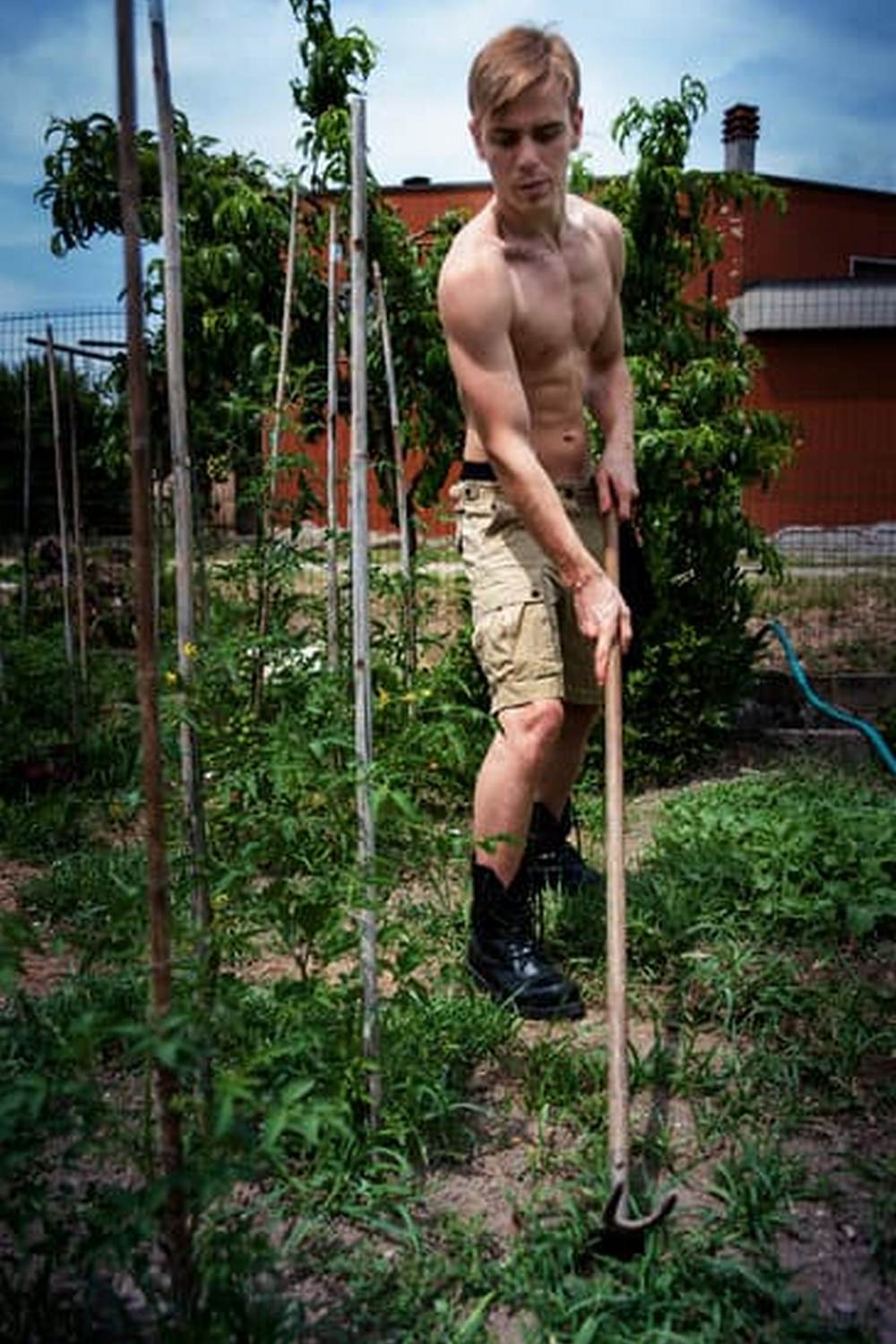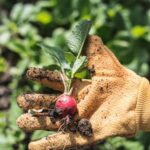Are you interested in starting your own vegetable garden but don’t have the space for a traditional ground plot? Vegetable gardening in containers is a fantastic alternative that allows you to grow your own fresh produce even in small spaces such as balconies, patios, and windowsills. This method of gardening not only provides an opportunity for urban dwellers to enjoy the benefits of homegrown vegetables but also offers flexibility and creativity in design and display.
When it comes to vegetable gardening in containers, selecting the right containers is crucial for the success of your garden. The size, material, and drainage capabilities of the containers play a significant role in the growth and health of your plants. Additionally, choosing the best vegetables for container gardening is important to ensure that your plants thrive and produce a bountiful harvest.
In this article, we will explore everything you need to know about vegetable gardening in containers – from selecting the right containers and choosing the best vegetables to soil and fertilizer tips, watering and maintenance advice, as well as pest and disease management. Whether you’re an experienced gardener or a beginner looking to try your hand at urban gardening, this comprehensive guide will help you create and maintain a successful container vegetable garden.
Selecting the Right Containers for Your Vegetable Garden
When it comes to vegetable gardening in containers, selecting the right containers is crucial for the success of your garden. The first thing to consider is the size of the container. Ideally, your container should be large enough to accommodate the root system of your chosen vegetables. A general rule of thumb is that larger plants require larger containers.
Another important factor to consider is the material of the container. Terracotta and ceramic pots are popular choices for their aesthetic appeal, but they can dry out quickly and may not be as durable as plastic or fiber-resin containers. Plastic containers are lightweight and retain moisture well, making them a practical choice for vegetable gardening in containers.
Additionally, consider the drainage holes in the containers. Proper drainage is essential to prevent waterlogged soil, which can cause root rot in your vegetables. Ensure that your chosen containers have enough drainage holes at the bottom to allow excess water to escape.
Finally, think about mobility and placement. If you plan on moving your containers around to chase sunlight or protect your plants from harsh weather conditions, consider investing in containers with built-in wheels or handles for easy transport.
| Vegetable | Container Size (Diameter X Depth) |
|---|---|
| Tomatoes | 18 inches x 24 inches |
| Carrots | 12 inches x 12 inches |
| Lettuce | 8 inches x 8 inches |
By carefully considering these factors and matching them with the specific needs of your chosen vegetables, you can ensure a successful vegetable gardening experience in containers.
Choosing the Best Vegetables for Container Gardening
When it comes to vegetable gardening in containers, choosing the right vegetables is crucial for a successful harvest. Not all vegetables are well-suited for container gardening, so it’s important to select varieties that will thrive in a confined space. Here are some popular and easy-to-grow vegetables that are perfect for growing in containers.
Tomatoes
Tomatoes are one of the most popular choices for container gardening. There are many compact and dwarf varieties available that are ideal for small spaces. They require plenty of sunlight, regular watering, and support for their vines as they grow. With the right care, you can enjoy a bountiful harvest of juicy, homegrown tomatoes from your container garden.
Peppers
Peppers, whether sweet or hot, also do well in containers. Look for compact varieties like bell peppers or chili peppers that are suitable for confined spaces. Peppers need plenty of sunlight and warm temperatures to thrive, so be sure to place your containers in a sunny spot and protect them from chilly winds.
Herbs
Herbs like basil, rosemary, thyme, and parsley are excellent choices for container gardening. They don’t require a lot of space to grow and can be easily harvested for fresh seasoning in your cooking. Herbs also add fragrance and beauty to your container garden.
In addition to these options, other vegetables like lettuce, spinach, carrots, radishes, and green onions can also be successfully grown in containers. By choosing the right vegetables for your container garden, you can enjoy a productive and rewarding gardening experience even in limited outdoor spaces or on balconies.
Soil and Fertilizer Tips for Successful Container Gardening
Soil composition and fertilizer application are crucial factors for the success of vegetable gardening in containers. The right soil mix and proper fertilization can greatly impact the health, growth, and productivity of your container-grown vegetables.
Choosing the Right Soil Mix
When it comes to vegetable gardening in containers, using the correct soil mix is essential. It’s important to use a high-quality potting mix that is well-draining and has good water retention capabilities. Avoid using garden soil as it tends to compact in containers, leading to poor drainage and root suffocation. Additionally, garden soil may contain pests and diseases that could harm your plants.
Fertilizing Container Vegetables
Selecting the appropriate fertilizer for your container vegetables is crucial for their growth and development. Slow-release granular fertilizers are ideal for container gardening as they provide a steady supply of nutrients over an extended period. Alternatively, organic liquid fertilizers can be used for frequent feeding without the risk of over-fertilization. Always follow the recommended dosage on the fertilizer label to prevent nutrient imbalances or burning the plant roots.
Amending Soil and Replenishing Nutrients
Over time, nutrients in the soil will deplete as plants uptake them for growth. To maintain optimal soil fertility, consider amending the soil with organic matter such as compost or well-rotted manure during each planting season. Furthermore, you may need to replenish nutrients by top-dressing with a balanced fertilizer at regular intervals throughout the growing season.
By paying close attention to your container garden’s soil composition and implementing proper fertilization practices, you can ensure that your vegetable plants have all they need to thrive in their restricted environment.
Watering and Maintenance of Container Vegetable Garden
When it comes to watering your container vegetable garden, it is important to keep in mind that the soil in containers tends to dry out faster than traditional garden beds. To ensure that your vegetables are getting the water they need, consider the following tips:
- Check the moisture level of the soil regularly by sticking your finger into the top inch of soil. If it feels dry, it’s time to water.
- Water the plants thoroughly until you see water coming out of the drainage holes at the bottom of the container.
- Consider using a drip irrigation system or self-watering containers to provide a consistent water supply for your vegetables.
In addition to watering, maintaining your container vegetable garden also involves regular care and attention. Here are some maintenance tips to keep in mind:
- Monitor the growth of your plants and prune any dead or yellowing leaves to encourage healthy growth.
- Keep an eye out for any signs of pests or diseases, and take appropriate measures such as using organic pesticides or fungicides if necessary.
- Regularly fertilize your container vegetables with a balanced fertilizer to ensure they are getting the nutrients they need for robust growth and bountiful harvests.
By paying close attention to watering and maintenance, you can ensure that your container vegetable garden thrives throughout the growing season, providing you with a plentiful harvest of fresh, homegrown produce.
Pests and Disease Management for Container Vegetables
When it comes to vegetable gardening in containers, one of the challenges that gardeners may encounter is dealing with pests and diseases. Just like traditional garden beds, container gardens are also susceptible to various harmful insects and plant illnesses. However, with proper management and preventative measures, you can protect your container vegetables and ensure a bountiful harvest.
One effective way to prevent pests and diseases in your container vegetable garden is by choosing the right soil mix. Using a high-quality potting mix that is well-draining can help reduce the risk of waterlogged soil, which can attract pests and lead to root rot. Additionally, adding organic matter such as compost can improve soil fertility and promote healthy plant growth, making them more resilient to pests and diseases.
Another crucial aspect of pest and disease management for container vegetables is regular monitoring. Keep an eye on your plants for any signs of infestation or illness, such as yellowing leaves, unusual spots, or wilting. By catching these issues early on, you can take quick action to prevent further damage. Consider inspecting your container vegetable garden at least once a week to stay ahead of potential problems.
In addition to using natural remedies like neem oil or insecticidal soap for pest control, practicing good hygiene in your container garden can also aid in disease prevention. Remove any fallen leaves or debris from the containers regularly to eliminate potential hiding spots for pests and reduce the spread of fungal diseases.
Proper spacing between plants can also improve air circulation and minimize the risk of infections. By incorporating these strategies into your routine maintenance, you can effectively manage pests and diseases in your container vegetable garden while promoting a thriving growing environment.
Harvesting and Enjoying the Fruits of Your Container Garden
Once your container vegetables have reached maturity, it is time to harvest and enjoy the fruits of your labor. Harvesting your container garden vegetables can be a rewarding experience, as you get to enjoy the delicious, fresh produce that you have grown yourself. Here are some tips for harvesting and enjoying the fruits of your container garden:
1. Check for Ripeness: When harvesting your container vegetables, it is important to check for ripeness. Each vegetable has its own indicators of ripeness, so be sure to research and understand the specific signs for each vegetable you are growing.
2. Harvesting Techniques: Use the appropriate harvesting techniques for each vegetable to ensure that you do not damage the plant or affect future growth. For example, tomatoes should be gently twisted off the vine when they are fully ripe, while leafy greens can be harvested by cutting off outer leaves.
3. Enjoying Your Produce: Once harvested, be sure to enjoy your freshly picked vegetables in a variety of delicious recipes. Whether you choose to eat them raw in salads or cook them in a stir-fry, savoring the fruits of your container garden will bring satisfaction and joy.
By following these simple tips, you can ensure that you make the most out of your container vegetable gardening experience. Harvesting and enjoying your produce is one of the most fulfilling aspects of vegetable gardening in containers.
Remember that every successful planting season is also an opportunity to experiment with new plants and learn more about what works best for your particular environment when doing vegetable gardening in containers.
Creative Ideas for Designing and Displaying Container Vegetable Gardens
When it comes to designing and displaying a container vegetable garden, the possibilities are endless. Whether you have a small balcony or a spacious patio, there are numerous creative ideas to make your vegetable garden both functional and visually appealing.
One popular idea is to use vertical space for your container vegetable garden. Vertical gardening not only maximizes space but also creates an eye-catching display. You can use trellises, hanging planters, or wall-mounted containers to grow vegetables such as tomatoes, cucumbers, and beans. Additionally, using tiered plant stands or shelving units can add depth and dimension to your garden while allowing you to showcase a variety of vegetables.
Another creative idea for designing a container vegetable garden is to incorporate ornamental elements alongside your edible plants. Mixing flowers with vegetables not only adds color and visual interest but can also attract beneficial insects that help with pollination and pest control. Consider planting marigolds, nasturtiums, or pansies among your vegetable containers to create a vibrant and thriving garden space.
Additionally, repurposing unconventional items for container gardening can add a unique touch to your vegetable garden. Upcycling old crates, barrels, or even wheelbarrows as planters can give your garden a charming and rustic look. Similarly, using decorative pots and colorful containers can add personality and style to your vegetable garden while effectively growing your favorite veggies.
Incorporating these creative ideas into the design and display of your container vegetable garden not only enhances its visual appeal but also makes it a functional and productive space for growing fresh produce in any environment.
| Creative Idea | Description |
|---|---|
| Vertical Gardening | Maximizing space by using trellises, hanging planters, or wall-mounted containers |
| Ornamental Elements | Mixing flowers with vegetables for added color and beneficial insect attraction |
| Repurposing Items | Using old crates, barrels, decorative pots for unique and charming planters |
Benefits of Vegetable Gardening in Containers for Urban Dwellers
In conclusion, vegetable gardening in containers offers numerous benefits for urban dwellers. Not only does it allow those with limited space to enjoy the pleasures of growing their own vegetables, but it also provides a source of fresh and nutritious produce right at their fingertips. Additionally, container gardening can be a therapeutic and rewarding hobby that helps individuals connect with nature and enjoy the satisfaction of watching their plants thrive.
One of the key advantages of vegetable gardening in containers is the flexibility it offers in terms of placement. Whether you have a balcony, rooftop, or small patio, there are always creative ways to maximize your space and create a thriving container garden. This means that even those living in urban areas with limited outdoor space can still experience the joys of growing their own vegetables.
Frequently Asked Questions
What Is the Best Vegetable to Grow in a Container?
The best vegetable to grow in a container is one that doesn’t require an extensive root system, such as lettuce, spinach, radishes, or green onions. These vegetables can thrive in the limited space provided by a container.
How Deep Do Containers Need to Be to Grow Vegetables?
Containers need to be deep enough to accommodate the specific vegetable’s root system. As a general rule of thumb, most vegetables require containers that are at least 6-12 inches deep. However, deeper-rooted plants like tomatoes or peppers may need containers that are 18 inches deep or more.
How Many Vegetables Can I Grow in a 5 Gallon Bucket?
You can grow a variety of vegetables in a 5-gallon bucket, including tomatoes, peppers, beans, peas, carrots, and smaller varieties of squash or melons. Just ensure proper spacing and consider the depth required for each vegetable’s roots when using a 5-gallon bucket for gardening.

If you’re looking to get into vegetable gardening, or are just looking for some tips on how to make your current garden better, then you’ve come to the right place! My name is Ethel and I have been gardening for years. In this blog, I’m going to share with you some of my best tips on how to create a successful vegetable garden.





